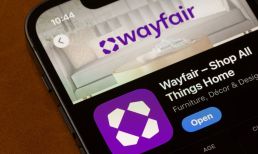And there are a lot of them. The Optimizing AP and AR Playbook, a collaboration between PYMNTS and OnPay Solutions, found last month that an estimated nine billion paper invoices are processed every year in U.S. AP departments, leaving plenty of room for leaked spend, errors, fraud and a lack of cash flow visibility for both buyers and suppliers.
With finance professionals no longer able to receive paper invoices and checks in the mail, Neal Anderson, president and CEO of OnPay Solutions, said organizations are quickly realizing that the status quo is no longer acceptable.
“In accounts payable and accounts receivable, if it’s still a paper-based or manual process, it must be scrutinized heavily,” Anderson recently told Karen Webster. “Any strategic CFO will recognize the need for digital transformation.”
In many ways, the coronavirus pandemic has become a catalyst to enterprise modernization. With so much paper stuck in AR and AP departments, the B2B payment functions are prime digitization targets that could yield efficiencies and cost savings well after economic disruption settles. But as Anderson explained, it won’t be easy for chief finance officers (CFOs) to entirely transform these processes all at once. Indeed, some workflows will be much easier to digitize than others.
The Rise Of The Virtual Card
Advertisement: Scroll to Continue
Among the most disruptive impacts of a work-from-home climate is the incompatibility of paper checks. With organizations now tasked with having to move money “literally from your kitchen table,” Anderson noted that the manual process of printing and mailing out paper checks is no longer viable.
It is, however, an area of low-hanging fruit for CFOs seeking to quickly digitize financial processes.
While ACH payments can be an efficient way to settle invoices, for the suppliers that can accept them, virtual cards will become a critical and strategic B2B payment method for both buyers and suppliers.
“The ultimate B2B payment is really a virtual card,” he said. “From a payer standpoint, this generates revenue in the form of cash back to the payer, and for any company that’s looking to offset the negative impact they’ve experienced from the pandemic, such as loss of business, this is a great way to do that.”
For suppliers, meanwhile, virtual cards offer enhanced security without having to alter card acceptance workflows. For both sides, the transaction data of a virtual card payment means streamlined reconciliation and reporting.
“To be able to provide that information in a specific file format that can be ingested into an accounts receivable system is a great motivator for an AR department to accept those payments,” added Anderson.
The eInvoicing Challenge
Digital transformation is rarely easy, particularly within organizations that struggle to pivot from the inertia of the status quo. According to Anderson, digitization of the B2B payments themselves is likely to be easier than overhauling the technologies and workflows associated with invoicing.
For many suppliers, working remotely has driven AR departments to email invoices out to customers, if they hadn’t been doing so already. The problem with this strategy, however, is that this presents a false sense of digitization.
“There’s a misperception that receiving an invoice as a PDF document attached to an email is an electronic invoice,” Anderson explained. “That’s not the case. That PDF is probably still going to be printed out at some point.”
Without automation technology to capture and integrate data on a digital invoice, neither buyer nor supplier can access the data they need for reconciliation purposes, even if the payment on that invoice is electronic.
One of the reasons transforming invoice workflows is so difficult is because producing and managing these documents requires complex, customized workflows. In both AR and AP departments, invoices change many hands and departments as they move through the approvals process. The invoice is connected to so many other areas of the enterprise, like inventory management, so any disruption to legacy workflows is sure to ripple through the enterprise.
While there is reluctance among many firms to adopt eInvoicing, Anderson advised that businesses must conduct their due diligence to understand the return on investment for this particular area of digital transformation. The disruption that eInvoicing can create throughout various departments of the enterprise can actually be a positive one, thanks to the ability to integrate data across platforms and to enhance automation.
Prioritizing Buyer-Supplier Benefits
For some organizations, the current economic environment has forced a long-overdue conversation on digitization. Now that businesses can no longer procrastinate, CFOs and finance departments are not only exploring how to cope in today’s market, but they’re also taking the opportunity to optimize operations for the future.
That could mean opening up new lines of revenue from virtual card payments, reducing the cost of paper invoice generation or strengthening buyer-supplier relationships through enhanced data connectivity.
For the growing number of businesses intensifying their efforts to cut costs, this opportunity is particularly valuable for both AP and AR departments.
“When you look at the return on investment of a digitized, no-touch invoicing and no-touch payments process, it really lowers expenses,” noted Anderson. “Anything that can help both the AP and AR department mitigate risk with this pandemic has got to be evaluated, and action must be taken.”




